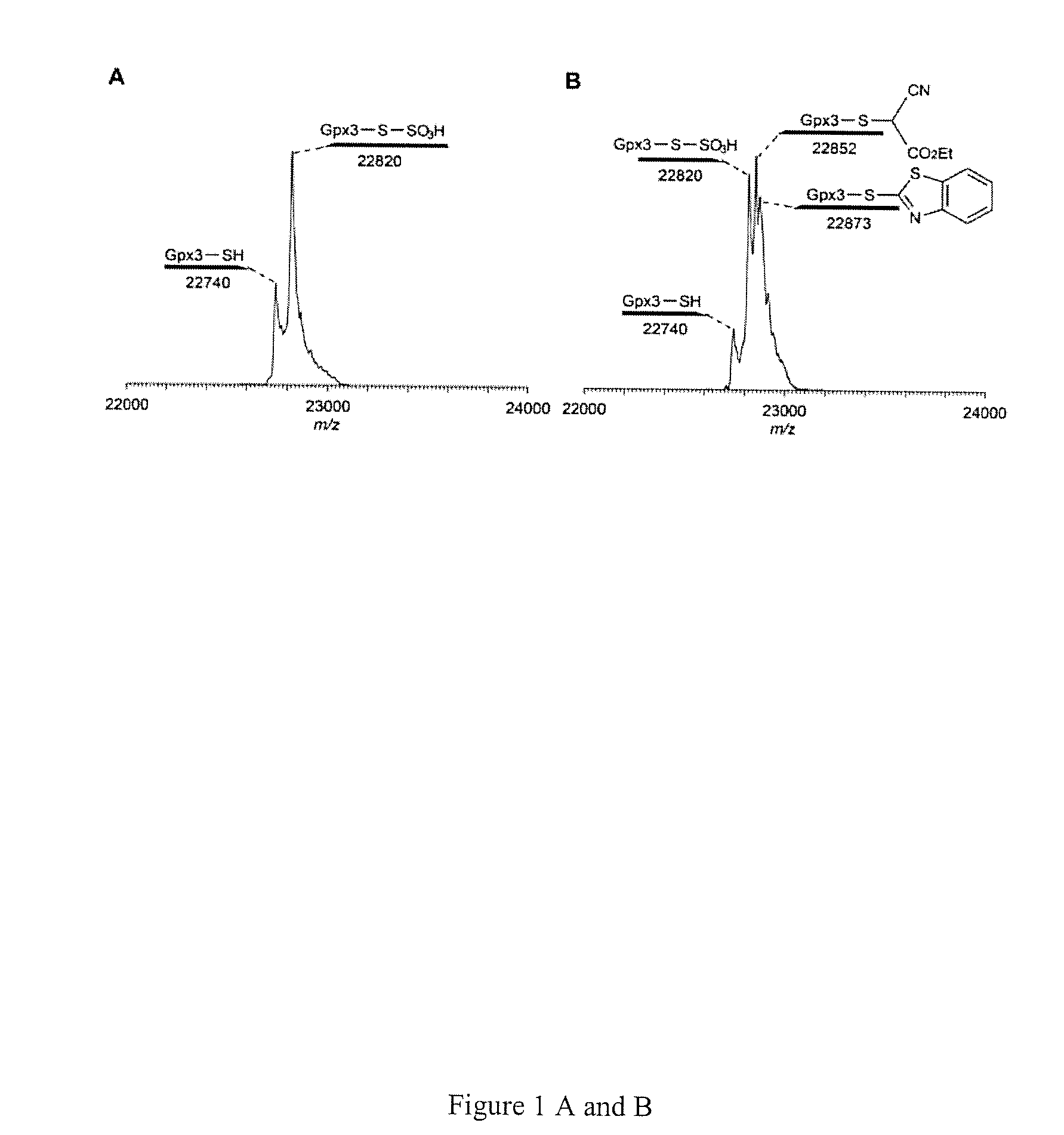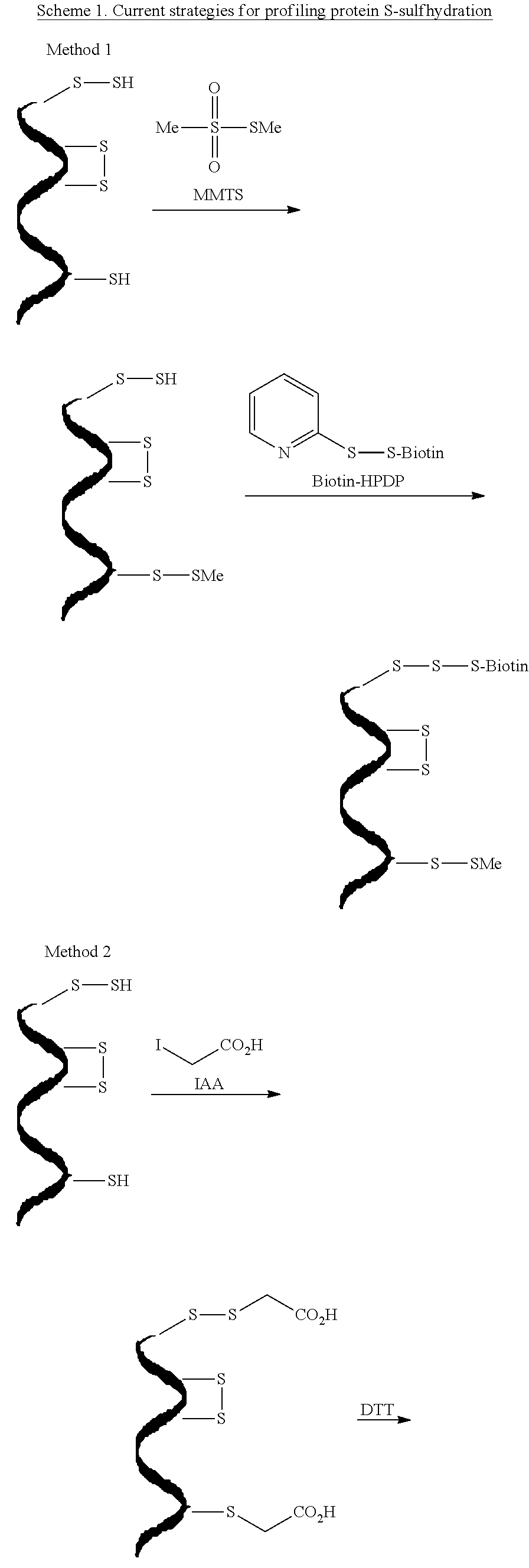Detection of protein s-sulfhydration via a tag-switch technique
a technology of protein sulfhydration and tag switch, which is applied in the detection of post translational modifications, instruments, material analysis, etc., can solve the problems of difficult development of selective detection methods, difficult to detect sulfhydration, and difficulty in both methods, so as to achieve greater reactivity
- Summary
- Abstract
- Description
- Claims
- Application Information
AI Technical Summary
Benefits of technology
Problems solved by technology
Method used
Image
Examples
example 1
[0044]Protein S-sulfhydration (forming —S—SH adducts from cysteine residues) is a newly defined oxidative post-translational modification and plays an important role in H2S mediated signaling pathways. This study reports the first selective, ‘tag-switch’ method which can directly label protein S-sulfhydrated residues to stable thioether conjugates. Furthermore it is demonstrated that H2S alone cannot lead to S-sulfhydration and that the two possible physiological mechanisms include reaction with protein sulfenic acids (P—SOH) or the involvement of metal centers which would facilitate the oxidation of H2S to HS..
[0045]A major challenge in this technology is whether the newly generated disulfide linkage from persulfide moieties display a unique reactivity for a suitable nucleophile to an extent that distinguishes them from common disulfides. SH blocking reagents are well known.[6] However, those capable of fulfilling the criteria for this assay are limited. For example, irreversible t...
PUM
| Property | Measurement | Unit |
|---|---|---|
| fluorescent | aaaaa | aaaaa |
| reactivity | aaaaa | aaaaa |
| compositions | aaaaa | aaaaa |
Abstract
Description
Claims
Application Information
 Login to View More
Login to View More - R&D
- Intellectual Property
- Life Sciences
- Materials
- Tech Scout
- Unparalleled Data Quality
- Higher Quality Content
- 60% Fewer Hallucinations
Browse by: Latest US Patents, China's latest patents, Technical Efficacy Thesaurus, Application Domain, Technology Topic, Popular Technical Reports.
© 2025 PatSnap. All rights reserved.Legal|Privacy policy|Modern Slavery Act Transparency Statement|Sitemap|About US| Contact US: help@patsnap.com



